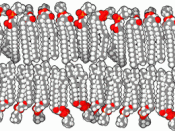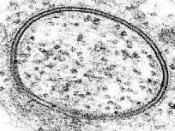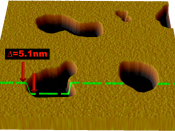Characteristics of Bacteria:
Bacteria are all around us, everywhere in the world. In fact, the only way to avoid bacteria is to live in a totally sterile environment. There are 3 things bacteria needs in order to live: water, warmth and food. Without these three things, the bacteria become idle, until water, warmth and food arrives. Then they grow and increase rapidly, using up the resources. Bacteria are also very adaptable to their environment. If conditions are not right, most can be dormant for years until conditions are good. Some can even change what they eat, change the temperature in which they can resist, or even resist some biocides if dosage is small enough. Some bacteria can even form a slime layer on themselves acting almost like a "cell membrane", choosing what goes inside the bacteria and out. Bacteria are very adaptable and can survive in almost any condition.
Why Cells are Microscopic:
Smaller cells function more efficiently than bigger cells.
In the body, there are about 100 trillion small cells - and this is for a reason. Smaller cells have advantages over big cells. All substances go in and out of the cell must cross through the surface of the cell. In large cells, the surface area/ to volume ratio is too high, making the substances that need to get into the cell slower. In the small cells, the surface area/ to volume ratio is high, making it easier for substances to go in and out of the cell fast and efficiently. Smaller cells give the substance less space to travel in order to get to the nucleus, while the larger cells make it difficult for the substance to reach the nucleus because of its large distance from the nucleus and the cell surface. Therefore, smaller cells are more...



A little correction about membrane proteins.
Proteins embedded in the cell membrane are responsible for transporting substances in/out of the cell(And actually a lot more other functions). (For this function, it's basically for small substances only, as the protein itself cannot be too large) (For larger substances, digestion is needed, or the cell can simply take it up by phagocytosis) Passive transport occurs when the substance is diffused down the concentration gradient. (From Hi concn. to Low concn.) And active transport occurs when the cell needs to take up substances against the concn. gradient. Active transport also takes up energy (ATP).
3 out of 3 people found this comment useful.